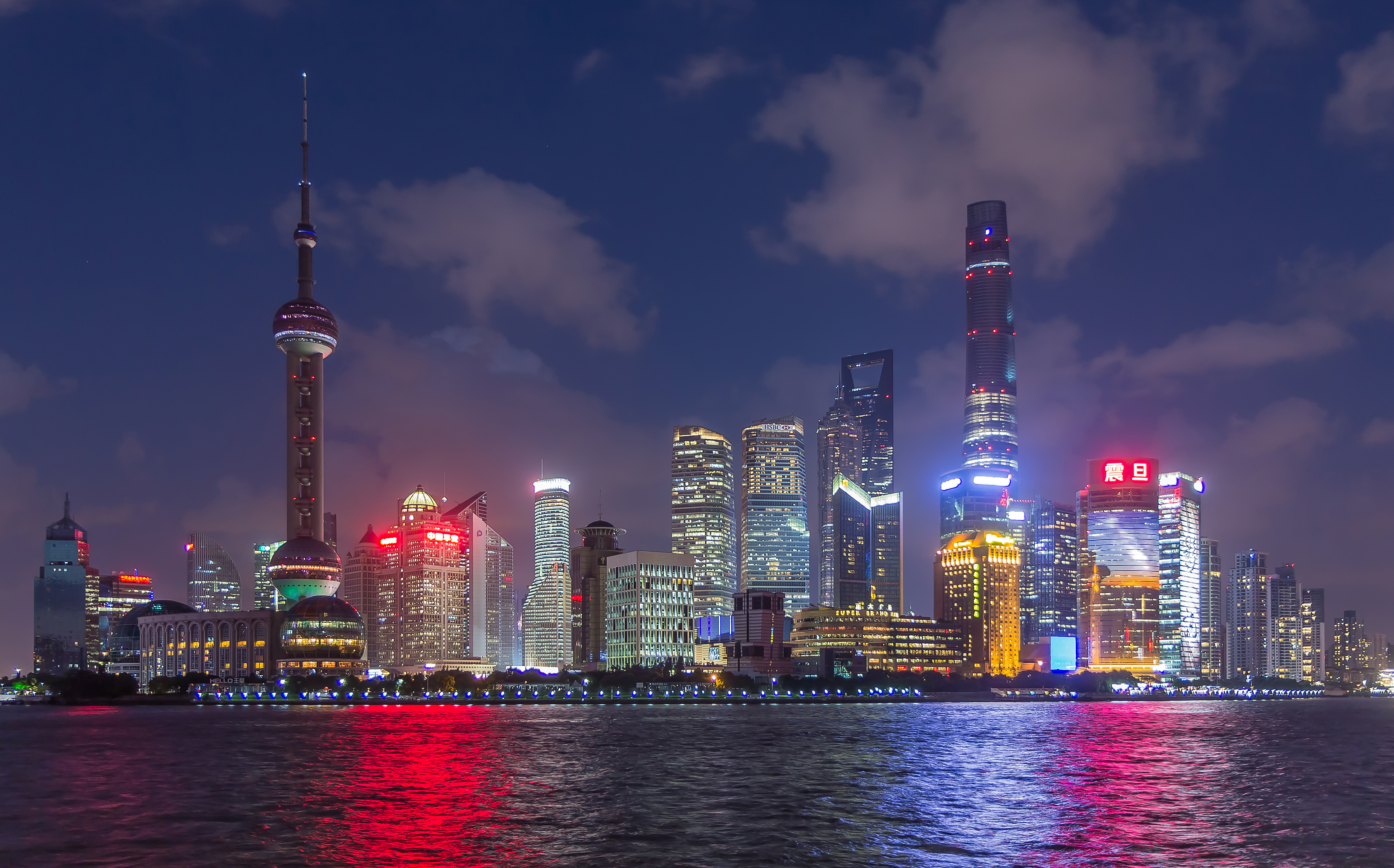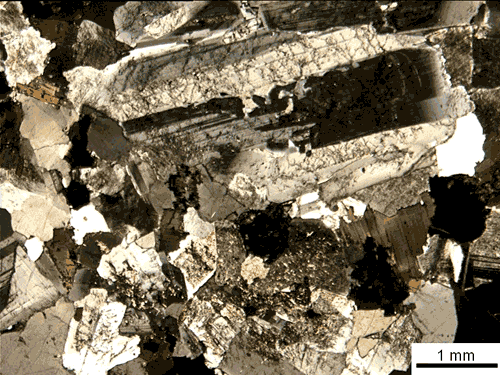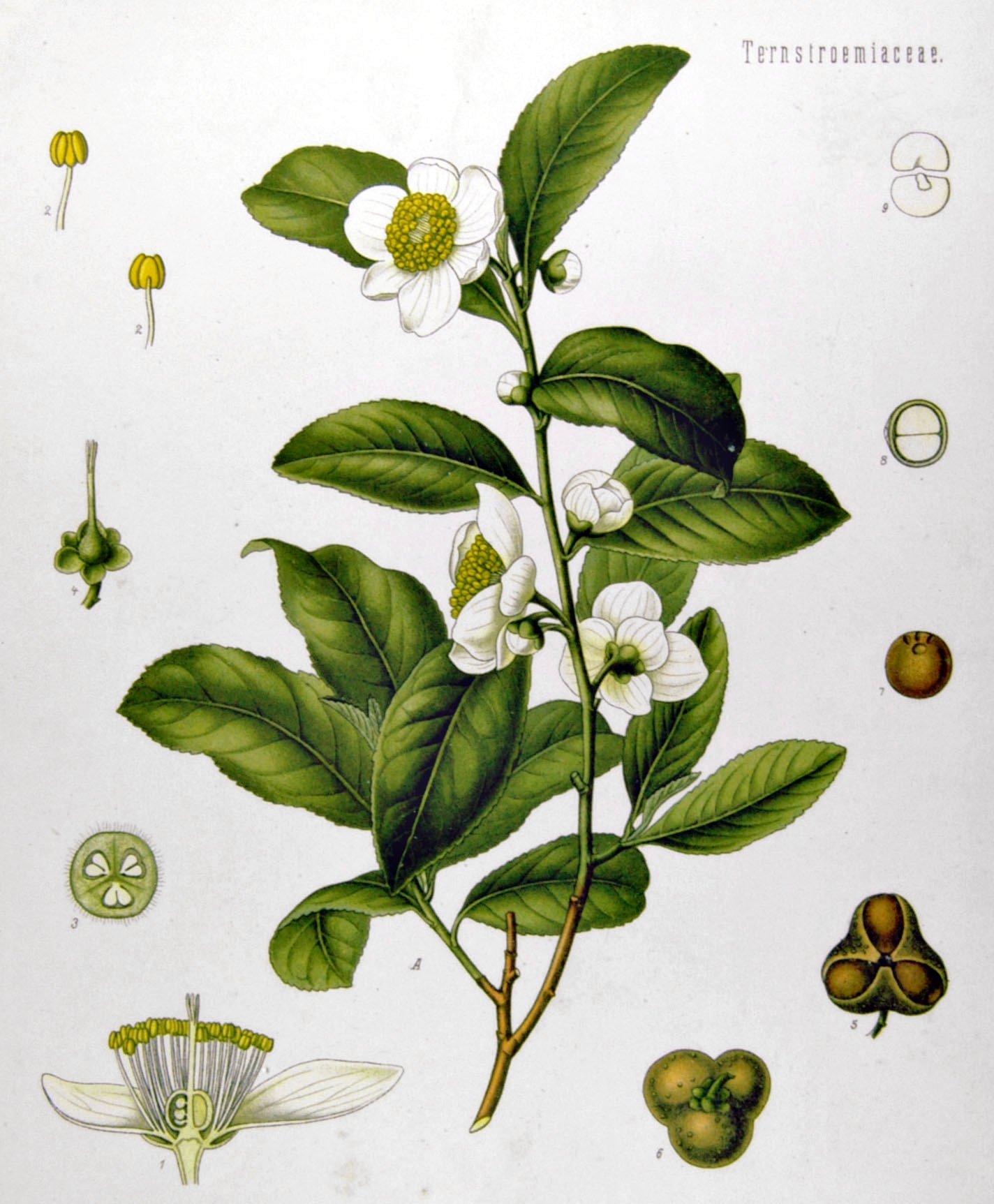|
Huangshan
Huangshan (),Bernstein, pp. 125–127. Literal translation, literally meaning the Yellow Mountain(s), is a mountain range in southern Anhui Provinces of China, Province in eastern China. It was originally called “Yishan”, and it was renamed because of a legend that Emperor Xuanyuan once made alchemy here. Vegetation on the range is thickest below , with trees growing up to the treeline at . The area is well known for its scenery, sunsets, peculiarly-shaped granite peaks, Huangshan pine trees, hot springs, winter snow and views of the clouds from above. Huangshan is a frequent subject of traditional Chinese paintings and Chinese literature, literature, as well as modern photography. It is a UNESCO World Heritage Site and one of Tourism in China#Famous sites, China's major tourist destinations. Physical description The Huangshan mountain range has many peaks, some more than 1,000 meters (3,250 feet) high. The three tallest and best-known peaks are ''Lotus Peak'' (Lianhu ... [...More Info...] [...Related Items...] OR: [Wikipedia] [Google] [Baidu] |
Huangshan City
Huangshan (), is a prefecture-level city in southern Anhui Province, People's Republic of China. Huangshan means ''Yellow Mountain'' in Chinese and the city is named after the famously scenic Yellow Mountains which cover much of the city's vast geographic expanse. The prefectural city of Huangshan includes three urban districts and four counties. The urban center of Huangshan was originally the city of Tunxi and is now called Tunxi District. Locals still call the city Tunxi to distinguish urban core from other parts of Huangshan. Huangshan occupies the southernmost part of Anhui. It is bordered by Chizhou to the northwest, Xuancheng to the northeast, Jiangxi Province to the southwest and Zhejiang Province to the southeast. Huangshan's history dates back to the time of the First Emperor. The city's current jurisdiction covers much of the historical and cultural region of Huizhou (), which together with Anqing formed the name of Anhui Province. Huangshan is home to two UNESCO W ... [...More Info...] [...Related Items...] OR: [Wikipedia] [Google] [Baidu] |
安徽 黄山 - 云谷缆车内前望 - Panoramio
Anhui , (; formerly romanized as Anhwei) is a landlocked province of the People's Republic of China, part of the East China region. Its provincial capital and largest city is Hefei. The province is located across the basins of the Yangtze River and the Huai River, bordering Jiangsu to the east, Zhejiang to the southeast, Jiangxi to the south, Hubei to the southwest, Henan to the northwest, and Shandong for a short section in the north. With a population of 63.65 million, Anhui is the 8th most populous province in China. It is the 22nd largest Chinese province based on area, and the 12th most densely-populated region of all 34 Chinese provincial regions. Anhui's population is mostly composed of Han Chinese. Languages spoken within the province include Jianghuai Mandarin, Wu, Hui, Gan and small portion of Zhongyuan Mandarin Chinese. The name "Anhui" derives from the names of two cities: Anqing and Huizhou (now Huangshan City). The abbreviation for Anhui is "" after the historical ... [...More Info...] [...Related Items...] OR: [Wikipedia] [Google] [Baidu] |
Anhui
Anhui , (; formerly romanized as Anhwei) is a landlocked province of the People's Republic of China, part of the East China region. Its provincial capital and largest city is Hefei. The province is located across the basins of the Yangtze River and the Huai River, bordering Jiangsu to the east, Zhejiang to the southeast, Jiangxi to the south, Hubei to the southwest, Henan to the northwest, and Shandong for a short section in the north. With a population of 63.65 million, Anhui is the 8th most populous province in China. It is the 22nd largest Chinese province based on area, and the 12th most densely-populated region of all 34 Chinese provincial regions. Anhui's population is mostly composed of Han Chinese. Languages spoken within the province include Jianghuai Mandarin, Wu, Hui, Gan and small portion of Zhongyuan Mandarin Chinese. The name "Anhui" derives from the names of two cities: Anqing and Huizhou (now Huangshan City). The abbreviation for Anhui is "" after the h ... [...More Info...] [...Related Items...] OR: [Wikipedia] [Google] [Baidu] |
Huangshan Pine
''Pinus hwangshanensis'', or Huangshan pine, is a pine endemic to the mountains of eastern China; it is named after the Huangshan Mountains in Anhui, from where it was first described. Description ''Pinus hwangshanensis'' is an evergreen tree reaching in height, with a very broad, flat-topped crown of long, level branches. The bark is thick, grayish, and scaly plated. The leaves are needle-like, dark green, 2 per fascicle, long and wide, the persistent fascicle sheath long. The cones are broad squat ovoid, long, yellow-brown, opening when mature in late winter to 5–7 cm broad. The seeds are winged, long with a 1.5–2.5 cm wing. Pollination occurs in mid-spring, with the cones maturing 18–20 months after. It is closely related to Japanese black pine (''P. thunbergii''), differing from it in the slenderer leaves, brown (not white) buds and broader cones. Distribution and habitat Huangshan pines are endemic to the mountains of eastern China, in the ... [...More Info...] [...Related Items...] OR: [Wikipedia] [Google] [Baidu] |
Huangshan Maofeng
Huangshan Maofeng tea (; pronounced ) is a green tea produced in south eastern interior Anhui province of China. The tea is one of the most famous teas in China and can almost always be found on the China Famous Tea list. The tea is grown near Huangshan (Yellow Mountain), which is home to many famous varieties of Green Tea. Huangshan Mao Feng Tea's English translation is "Yellow Mountain Fur Peak" due to the small white hairs which cover the leaves and the shape of the processed leaves which resemble the peak of a mountain. The best teas are picked in the early Spring before China's Qingming Festival The Qingming festival or Ching Ming Festival, also known as Tomb-Sweeping Day in English (sometimes also called Chinese Memorial Day or Ancestors' Day), is a traditional Chinese festival observed by the Han Chinese of mainland China, Hong Ko .... When picking the tea, only the new tea buds and the leaf next to the bud are picked. It is said by local tea farmers that the leaves ... [...More Info...] [...Related Items...] OR: [Wikipedia] [Google] [Baidu] |
Green Tea
Green tea is a type of tea that is made from '' Camellia sinensis'' leaves and buds that have not undergone the same withering and oxidation process which is used to make oolong teas and black teas. Green tea originated in China, and since then its production and manufacture has spread to other countries in East Asia. Several varieties of green tea exist, which differ substantially based on the variety of ''C. sinensis'' used, growing conditions, horticultural methods, production processing, and time of harvest. The two main components unique to green tea are " catechins" and " theanine," and the health effects of these components are attracting a great deal of attention in Japan and abroad. History Tea consumption has its legendary origins in China during the reign of mythological Emperor Shennong. A book written by Lu Yu in 618–907 AD (Tang dynasty), '' The Classic of Tea'' (), is considered important in green tea history. The ''Kissa Yōjōki'' (喫茶養生記 ... [...More Info...] [...Related Items...] OR: [Wikipedia] [Google] [Baidu] |
Tourism In China
Tourism in China is a growing industry that is becoming a significant part of the Chinese economy. The rate of tourism has expanded over the last few decades since the beginning of reform and opening-up. The emergence of a newly rich middle class and an easing of restrictions on movement by the Chinese authorities are both fueling this travel boom. China has become one of world's largest outbound tourist markets. According to Euromonitor International, economic growth and higher incomes in nearby Asian countries will help China to become the world's number one tourist destination by 2030. China ranked second in the world for travel and tourism's contribution to GDP in 2022 ($814.1 billion), and first in the world for travel and tourism's contribution to employment (66,086,000 jobs in 2014). Tourism, based on direct, indirect, and induced impact, accounted for 9.3 percent of China's GDP in 2013. In 2017, the total contributions of China's Travel and Tourism sector made up 11% ... [...More Info...] [...Related Items...] OR: [Wikipedia] [Google] [Baidu] |
Granite
Granite () is a coarse-grained ( phaneritic) intrusive igneous rock composed mostly of quartz, alkali feldspar, and plagioclase. It forms from magma with a high content of silica and alkali metal oxides that slowly cools and solidifies underground. It is common in the continental crust of Earth, where it is found in igneous intrusions. These range in size from dikes only a few centimeters across to batholiths exposed over hundreds of square kilometers. Granite is typical of a larger family of ''granitic rocks'', or '' granitoids'', that are composed mostly of coarse-grained quartz and feldspars in varying proportions. These rocks are classified by the relative percentages of quartz, alkali feldspar, and plagioclase (the QAPF classification), with true granite representing granitic rocks rich in quartz and alkali feldspar. Most granitic rocks also contain mica or amphibole minerals, though a few (known as leucogranites) contain almost no dark minerals. Granite is ... [...More Info...] [...Related Items...] OR: [Wikipedia] [Google] [Baidu] |
Glory (optical Phenomenon)
A glory is an optical phenomenon, resembling an iconic saint's halo around the shadow of the observer's head, caused by sunlight or (more rarely) moonlight interacting with the tiny water droplets that comprise mist or clouds. The glory consists of one or more concentric, successively dimmer rings, each of which is red on the outside and bluish towards the centre. Due to its appearance, the phenomenon is sometimes mistaken for a circular rainbow, but the latter has a much larger diameter and is caused by different physical processes. Glories arise due to wave interference of light internally refracted within small droplets. Appearance and observation Depending on circumstances (such as the uniformity of droplet size in the clouds), one or more of the glory's rings can be visible. The angular size of the inner and brightest ring is much smaller than that of a rainbow, about 5° to 20°, depending on the size of the droplets. In the right conditions, a glory and a rainbow ... [...More Info...] [...Related Items...] OR: [Wikipedia] [Google] [Baidu] |
Vista
Vista usually refers to a distant view. Vista may also refer to: Software *Windows Vista, the line of Microsoft Windows client operating systems released in 2006 and 2007 * VistA, (Veterans Health Information Systems and Technology Architecture) a medical records system of the United States Department of Veterans Affairs and others worldwide *VISTA (comparative genomics), software tools for genome analysis and genomic sequence comparisons * VistaPro, and Vista, 3D landscape generation software for the Amiga and PC * VIsualizing STructures And Sequences, bioinformatics software Organizations and institutions * Vista Entertainment Solutions, a New Zealand software company specializing in solutions for the cinema industry *AmeriCorps VISTA, a national service program to fight poverty through local government agencies and non-profit organizations *Ventura Intercity Service Transit Authority, a public transportation agency in Ventura County, California, US *Vista Community College, no ... [...More Info...] [...Related Items...] OR: [Wikipedia] [Google] [Baidu] |
Glacier
A glacier (; ) is a persistent body of dense ice that is constantly moving under its own weight. A glacier forms where the accumulation of snow exceeds its ablation over many years, often centuries. It acquires distinguishing features, such as crevasses and seracs, as it slowly flows and deforms under stresses induced by its weight. As it moves, it abrades rock and debris from its substrate to create landforms such as cirques, moraines, or fjords. Although a glacier may flow into a body of water, it forms only on land and is distinct from the much thinner sea ice and lake ice that form on the surface of bodies of water. On Earth, 99% of glacial ice is contained within vast ice sheets (also known as "continental glaciers") in the polar regions, but glaciers may be found in mountain ranges on every continent other than the Australian mainland, including Oceania's high-latitude oceanic island countries such as New Zealand. Between latitudes 35°N and 35°S, glaciers occur ... [...More Info...] [...Related Items...] OR: [Wikipedia] [Google] [Baidu] |
Tea Leaves
Tea is an aromatic beverage prepared by pouring hot or boiling water over cured or fresh leaves of ''Camellia sinensis'', an evergreen shrub native to East Asia which probably originated in the borderlands of southwestern China and northern Myanmar. Tea is also rarely made from the leaves of ''Camellia taliensis''. After plain water, tea is the most widely consumed drink in the world. There are many different types of tea; some have a cooling, slightly bitter, and astringent flavour, while others have vastly different profiles that include sweet, nutty, floral, or grassy notes. Tea has a stimulating effect in humans primarily due to its caffeine content. An early credible record of tea drinking dates to the third century AD, in a medical text written by Chinese physician Hua Tuo. It was popularised as a recreational drink during the Chinese Tang dynasty, and tea drinking subsequently spread to other East Asian countries. Portuguese priests and merchants introduced it to ... [...More Info...] [...Related Items...] OR: [Wikipedia] [Google] [Baidu] |
.jpeg/1200px-Yellow_Mountain_Icy_Trees_(259939571).jpeg)


.jpg)


